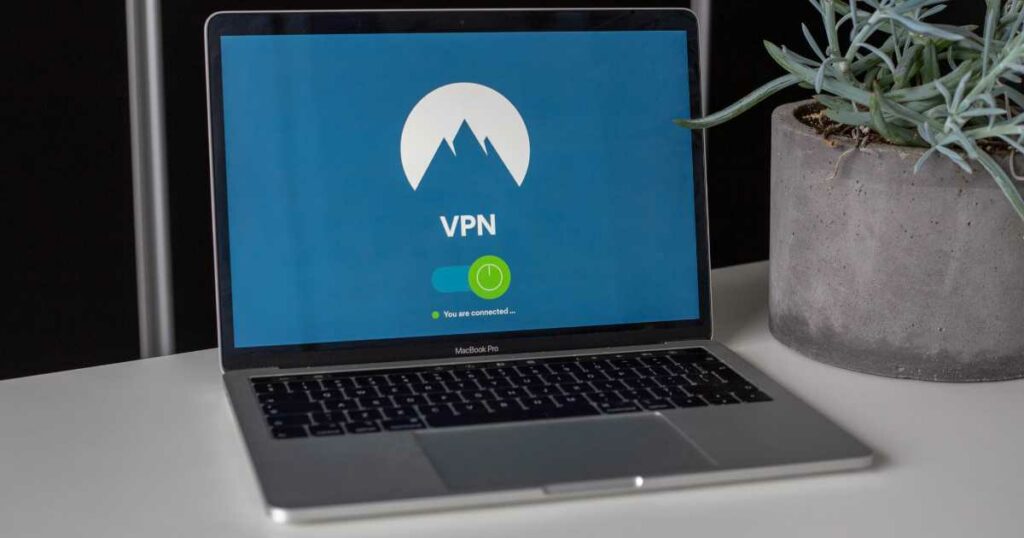People download Virtual Private Networks (VPN) for different reasons. While some use it for security reasons, others use it to bypass software or website restrictions on regions. Still, there may come a time when you want to turn off your VPN.
Many Mac users need help navigating their way to the correct setting. If you feel this way, don’t stress. This article will explain how to turn off the VPN on Mac. We will also share everything you need to know about your VPN settings on your Mac devices.
How to Turn Off VPN on Mac

There are three main ways to turn off VPN on Mac. They are:
- Turning off through the VPN application
- Turning off through the Mac Menu Bar
- Turning off through the Configuration Bar
How to Turn It Off Through the VPN Application
This is the simplest way to turn off your VPN. VPN apps are usually downloaded as applications. So, to turn it off:
- Open the VPN app on your Mac.
- Find Disconnect “Stop” or “Turn Off.” For some apps, this is the first thing you see when you open them. However, you may have to search the menu bar.
- Allow the app to disconnect from the VPN server completely.
- Once you’ve done this, you can close the app and continue to use your Mac. You can double-check that you have been logged out with an #IP locator website.
How to Turn Off VPN Through the Menu Bar
This is a direct way to turn off your VPN through the Mac operating system. Follow the steps below.
- Go to the menu bar.
- Turn on “Show VPN status.”
- Turn off “VPN connection” from the menu bar.
How to Turn Off VPN Through the Configuration Bar
Some people configure their VPNs with an operating system instead of an app. In this case, here’s the best way to turn off your VPN.
- Select the Apple icon on the top left of your Mac.
- Click on System Preferences.
- Click on Network.
- Navigate to the left panel of the network window.
- Select the VPN connection.
- Click on Disconnect.
You should note that some VPNs don’t use Disconnect. You may find words like Stop, Turn Off, or Off instead.
Why You Should Turn Off VPN
Ordinarily, your VPN should always be on when you are online. The whole point is to protect your browsing history. Also, you can save money on booking sites, as they can’t use your location to alter prices. For example, you can get cheaper flights and hotel bookings with your VPN. You’ll also be able to protect your system against cyber attacks and jackets.
Still, certain circumstances may also validate turning it off. Here are some of these circumstances:
Poor Internet Speed
VPNs make an encrypted tunnel. It redirects your system to run through a remote server. Sometimes, this process can reduce your internet speed, especially when downloading a large file. This poor connection is a result of your Mac using more traffic resources.
So, if speed is a priority, it’s best to turn off your VPN. However, many great VPNs for macOS run at high speed.
Accessibility and Restrictions
You can use a feature or access a website or subscription only available in your region. Sometimes, you won’t need to turn off your VPN. Instead, you can switch locations. However, if the VPN service provider doesn’t have a server in your region, you will have to turn off your VPN.
How to Access VPN Configuration Settings on MacOS
Most VPN apps automatically create the configuration settings, so many users don’t know how to access these settings on their Macs. Even for those who manually set up their VPN configuration, navigating the settings may take work.
However, this setting is usually under Network. Here’s how to see your configuration settings:
- Open the Apple menu on your Mac.
- Tap on System Preferences.
- Click on Network, and a window will appear on your screen.
- The VPN configuration settings will be on display in the left panel of this window.
- The profiles are usually marked with the 🔒 icon.
You can check the details of each VPN configuration by clicking it open. Also, if the VPN application automatically sets up your VPN configuration, you’ll be able to check what application created the configuration in the checkbox.
How to Turn Off VPN Configuration
Sometimes, the VPN isn’t connecting or working as it should. In this case, the best way to troubleshoot is to switch off the VPN configuration and switch it on later.
Here’s how to turn it off:
- Open the Apple Menu on your Mac.
- Select System Preferences.
- Click on Network port configurations.
- Delete the VPN.
- Click on Apply Now and switch off your Mac.
- Restart and set up another VPN.
How Does a VPN Run on Mac?
Your VPN will run on your Mac in one of two ways:
You can either manually set up a VPN connection or download a VPN app from the Mac store.
Either way, the system stores the VPN configuration settings in a file on your hard drive. A configuration profile usually contains the following:
- Your VPN account name
- The authentication VPN settings, which includes your username, password, and certification
- The server address
- The VPN protocol that helps to connect to the server
You can export and import the configuration file on another system or restore it on a backup file. You can find it in Library/Preferences/com.apple.network extension.plist.
A VPN usually redirects your private data through a server controlled by the VPN service provider. This is neither government-controlled nor regulated. As good as this seems, your traffic may still be monitored and logged. So, it’s best to get a VPN from a verified and trusted service provider.
What Are the Best VPNs for Macs?
Besides security issues, Mac and iOS have their peculiarities, so you may find that what would work on other laptops may not be the best for your Mac. So, if you are experiencing some problems with your current VPN, here are five good VPNs you can check out for Mac.
These VPNs also have free trials before you are required to subscribe.
Express VPN
This is one of the most popular VPNs for iOS and macOS. It’s speedy and lag-free, and you’ll have access to the best servers with just one click.
It leaves no activity or connection logs. You can try Express for free and also get 90 days free.
Private Internet Access
This VPN functions at high speed and allows you to customize your security features. It has a built-in ad blocker and security tools like a kill switch and leak protection.
Private Internet leaves no log, and you can connect up to ten devices simultaneously.
CyberGhost
CyberGhost is very beginner-friendly. The VPN uses exclusive servers and IPs, which increases privacy. It also has public Wi-Fi protection and records no activity log.
You can try it for free with a 45-day money-back guarantee and access to 24-hour live support.
Proton VPN
Proton has a unique VPN accelerator that can increase your speed by up to 40 percent. The VPN also has a wide range. You can connect to over 1,400 encrypted servers in 61 countries.
It’s also great for people who use devices from several makers.
IP Vanish VPN
This VPN has excellent speed and range at a budget-friendly price. The app is lightweight and easy to install, so it’s especially great for people with older Mac systems.
It uses a shared VPN connection to make you completely untraceable.
How to Delete VPN on Mac
Deleting your VPN will permanently get rid of all your configuration settings. This way, you can only reconnect to a VPN server if you download the VPN again.
You can delete it in either of these two ways.
- Go to the Applications Folder on your Mac. Search for the VPN app and right-click on the name of the app. Click on Move to Bin.
- Navigate to System Preferences and click on Network. Then tap on the VPN configuration of the app you want to delete and select the button below the left panel. This will delete your VPN configuration permanently.
Final Thoughts
VPNs are a great way to protect your Mac. You can always turn it off in the app through the Mac menu or Configuration bar. It’s simple to learn how to turn off VPN on Mac, and it takes less than one minute.
If your VPN has poor speed or you are concerned about your security, you should consider downloading a verified VPN instead. You should be able to enjoy better browsing.
- IPSec vs. OpenVPN: Which Is Better? - December 10, 2022
- How to Turn Off VPN on Mac: A Step-by-Step Guide - December 10, 2022
- What Is a VPN Concentrator and What Does It Do? - December 10, 2022





